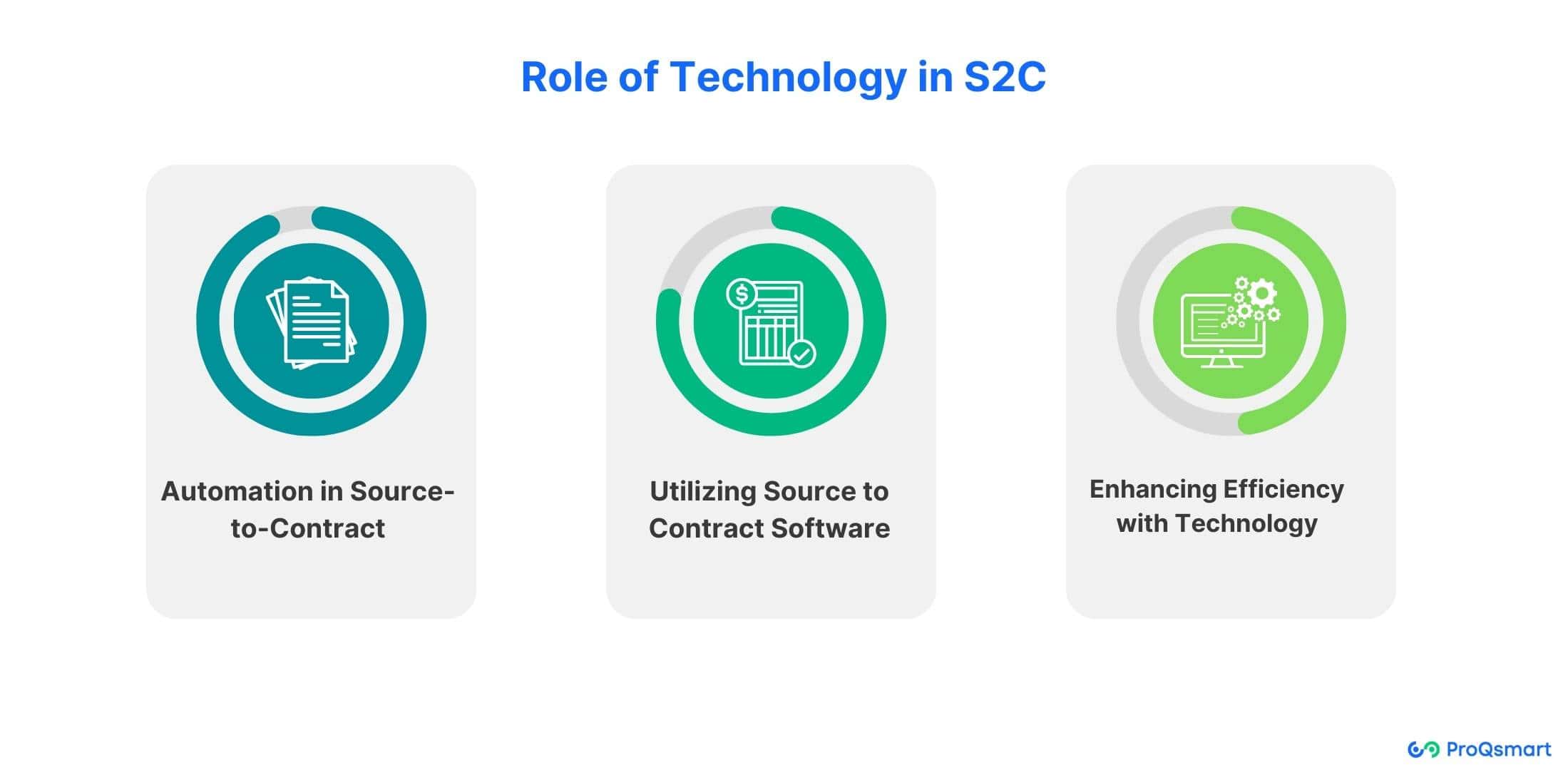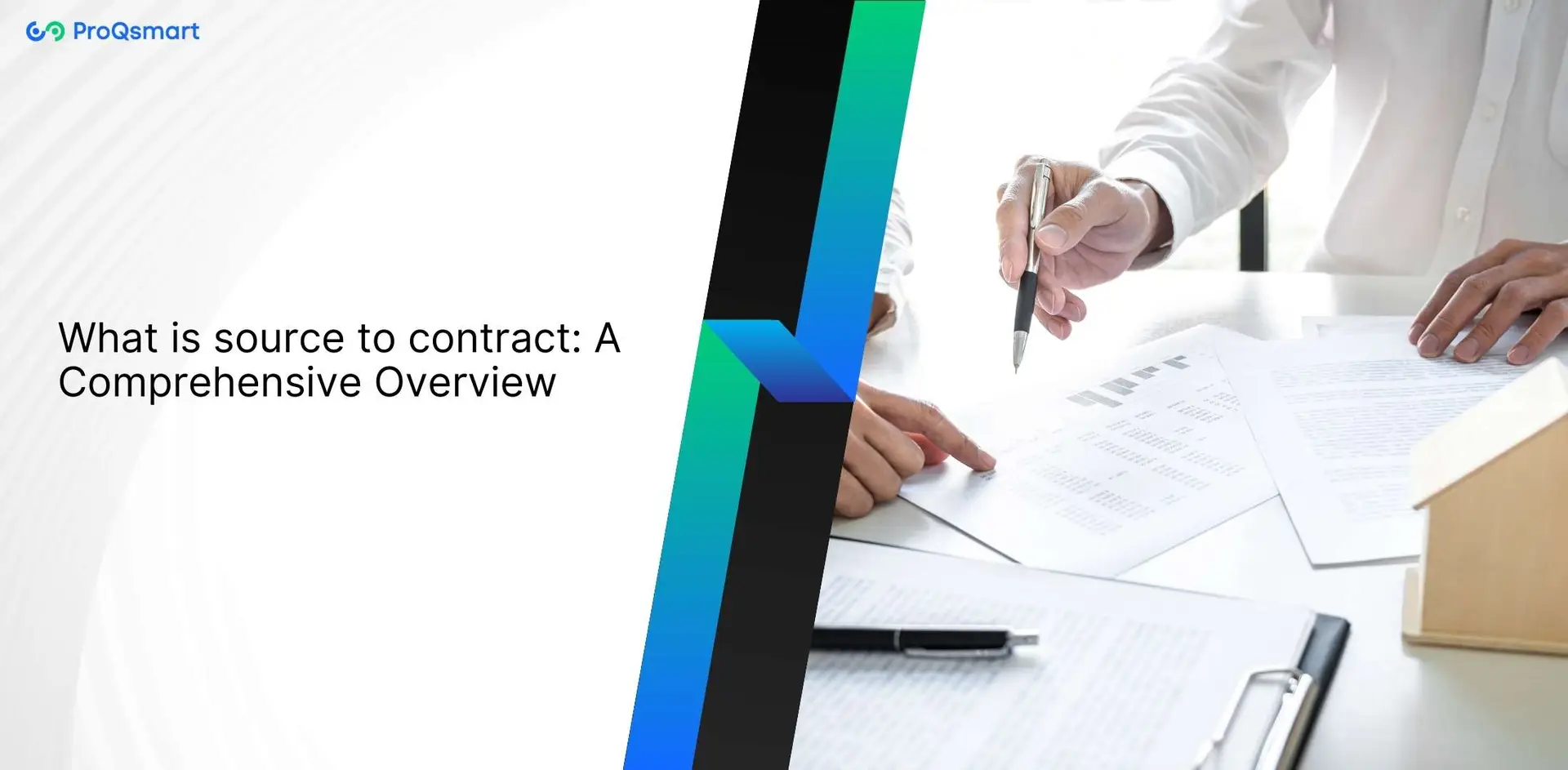Ever wonder how businesses keep contracts smooth and easy? Source-to-contract (S2C) is the magic behind the curtain. S2C guides the buying journey from supplier discovery to deal closure. It includes choosing suppliers, negotiating terms, and signing contracts.
You witness it when it reduces costs, increases productivity, and accelerates decision-making. It all has to do with technology. At their best, automated systems make S2C smarter and faster. That’s why some industries, such as tech and manufacturing, ace S2C, according to a report from AlixPartners.
What we’re going to be going into is this S2C world and unlocking some secrets in mastering procurement and contract management. Here’s how to apply S2C to your own work. So get ready to make your contracts shine with some real-world examples. You’ll dig it!
Key Takeaways
- Source-to-Contract (S2C) is a critical procurement process. It streamlines everything from sourcing suppliers to finalizing contracts, boosting efficiency and compliance in supply chain management.
- The S2C process encompasses several stages, such as supplier identification, negotiation, contract management, and performance evaluation. Each of these elements is essential to optimizing procurement operations.
- Adopting S2C can be incredibly helpful to organizations. It lowers costs, enhances supplier relationships, and ensures better compliance with contracts and risk management.
- Technology plays a fundamental role in S2C through automation. It also offers data-driven insights and improves collaboration among stakeholders, which enables smarter decision-making.
- S2C is embraced by different industries with specific adaptations, showing its flexibility. For example, the healthcare industry may prioritize regulatory compliance, while the manufacturing industry may prioritize cost efficiency.
- This means understanding the difference between S2C and Procure-to-Pay (P2P). S2C focuses on the strategic aspects of procurement, while P2P centers on the transactional part, from requisition to payment.
What is Source-to-Contract?

Source-to-contract is like the map showing how procurement gets from “I need it” to signing the contract. It’s a big-picture process that ties together many parts of procurement, making sure everything flows smoothly.
We start out noticing the need, for example, that we need new office chairs. From there, we just put our noses to the grindstone until we get the contract signed with the supplier. It’s an important part of the broader “source-to-pay” picture, which includes everything from ordering to payment.
Definition of Source-to-Contract
Source-to-contract is a step-by-step framework for discovering and procuring the goods or services we need. This process simplifies the steps we must follow to obtain the appropriate resources succinctly.
It also starts with a bit of market research to understand what’s out there and what budgets and quality requirements are needed. Next comes shaping a strategy to make sure we’re on the right track.
Selecting the right suppliers is important to us. We painstakingly whittle down our choices to produce a strong shortlist by how well they connect with our requirements. After we’ve settled on our best picks, we move on to negotiating contracts to secure the best deals.
Supplier selection and contract negotiation are key because it can indeed make or break the entire deal.
Importance of Source-to-Contract
Get source-to-contract right and you can save loads of money and make procurement far more efficient. When we do it well, that keeps everything organized and cuts down on waste.
It helps us remain compliant; it’s critical to us. Plus, it helps us mitigate risks, which is essential in the current landscape. By developing good relationships with suppliers, we can also drive business performance.
Digital tools make this process a lot easier. They also automate tasks like tendering and contract management, streamlining the whole process and making it more accurate.
It’s worth pointing out that about 80 percent of procurement teams still do this manually. That approach leads to both mistakes and slowdowns.
Digital lets us put everything into one space. This transformation significantly provides us with total visibility from the beginning of the tender to the end of the contract.
Key Components of S2C Process

That’s where understanding the source-to-contract (S2C) process comes in. It also covers the entire sourcing cycle, from needs assessment to contract closure. This process sets the stage for better resource utilization.
It also provides significant savings, which can reportedly reach as much as 15% annually. Let me dissect its most important elements.
1. Sourcing and Vendor Evaluation
S2C all begins with sourcing. Determine your organization’s needs and research suppliers thoroughly. This involves pinpointing what is necessary to meet business goals and looking into potential suppliers’ capabilities and reputations.
The next step is to put together a shortlist of qualified suppliers. This would depend on various criteria, including product quality, service reliability, and price competitiveness. Collecting relevant information, such as budget caps and lead times, is essential at this stage.
This helps make smart choices about who you want to work with.
2. Competitive Bidding Process
The competitive bidding process starts with the RFx stage. During this phase, we issue Requests for Quotations (RFQs) or Requests for Proposals (RFPs). This is where you invite pre-qualified suppliers to submit their bids.
The choice between an RFQ and an RFP depends on what you’re buying. Use an RFQ for straightforward buys where price is the most important factor. Turn to RFPs when you’re solving a complex problem and looking for the best option.
With procurement platforms, bidding is faster because it automates tasks like bid comparisons, which allows for faster decision-making.
3. Contract Formation and Management
In this phase, you negotiate terms with the suppliers you’ve selected. When you sign the contracts, you complete the S2C process. The steps include negotiating price, delivery time, and service levels to get better terms.
It’s also crucial to ensure every detail, including costs and product specs, is clear. Once a contract exists, the work is the management of that contract, which comes in the form of approval workflows to ensure compliance and accountability.
This methodical practice ensures adherence to contracts. It also saves money by negotiating better terms and getting volume discounts. These savings also allow funds to be redirected to other key areas of the business.
Benefits of Implementing S2C
Jumping into the source-to-contract (S2C) approach can add a lot of good to organizations. For starters, cost reduction is a biggie. With S2C, you get a shot to cut some of those costs because they are actually processes. Imagine competitive bidding that drives prices down so you can pick up better deals.
You monitor suppliers, keeping costs low. It’s like having a money-saving superhero by your side. Some key benefits include:
- Cut down costs with smart strategies and competitive bidding.
- Build strong ties with suppliers, boosting trust and reliability.
- Use data and insights for smarter choices.
The perks don’t end there. You can also go the extra mile and improve supplier relationships. A structured S2C process establishes the foundation for durable relationships. Collaborative sourcing strategies make everyone happy, building trust and ensuring suppliers are reliable.
These relationships make things run more smoothly and even lead to new ideas. It’s a win-win. On the decision side, S2C excels by providing data-driven intelligence. Imagine being able to align procurement with your organization’s goals.
It’s like having a GPS for your business to steer it in the right direction. You engage with stakeholders, fine-tuning procurement decisions for optimal results. That directly translates into competitive advantage and business success.
Cost Reduction Strategies
In the realm of S2C, some strategies make a splash in cost savings. Competitive bidding is a game changer, driving prices down and locking in sweet terms. Frequent supplier assessments keep it all humming, ensuring that you’re not overpaying.
S2C accelerates contract cycles by a staggering 50%. It also cuts admin and legal costs by 30%, making it a cost-cutting wizard.
Enhancing Supplier Relationships
A structured S2C process is foundational for developing long-term supplier relationships. Collaborative strategies strengthen trust, reliability, and operational efficiency. Strong ties with suppliers can even drive innovation.
S2C prevents leakage and swings total revenues up 1% to 2%. It also supports wider areas such as risk management and carbon emissions, making it a well-versed solution.
Improving Decision-Making Processes
S2C’s details-based insights are the gold for decision making. Aligning procurement with company goals creates better results. Stakeholder involvement fine-tunes decisions, ensuring that procurement strategies align with organizational goals.
By using automation, AI, and advanced analytics, the process delivers speed, control, and insights that provide a competitive edge.
Role of Technology in S2C

Tech has reshaped how we approach source-to-contract (S2C) processes, allowing us to move faster and more seamlessly. Just envision a pile-free stack of paperwork and emails. Digital platforms let us automate things, limiting the manual work and allowing us to spend more time on strategic initiatives.
Things like automated bidding and purchase orders let us have what we need ASAP. Fewer errors crop up when the documentation is done by computers, increasing accuracy and reducing costly mistakes.
Automation in Source-to-Contract
Automation truly takes the hassle out of procurement. It removes the grunt work and allows us to fly through tasks like sourcing and contracting much more quickly. Consider how much time that would save if you didn’t have to manually check every dot and tittle.
Automated systems take care of bidding and purchase orders, enabling us to source materials quickly and seamlessly. With computers managing the nitty-gritty, mistakes are much smaller, ensuring our procurement documents are accurate. This saves time and makes the entire sourcing process more efficient.
Utilizing Source to Contract Software
When you’re choosing S2C software, look for functions such as data centralization. This feature is essential for getting things in perspective and keeping all information contained. A good software solution gathers all your procurement data in one place, making it easier for you to see trends and make wise decisions.
User-friendly designs are also key. We need everyone on the team to be able to use the technology easily. This will lead to rapid adoption and seamless day-to-day use. By centralizing data and ensuring user-friendliness, companies can enhance their procurement processes.
Enhancing Efficiency with Technology
Tech’s magic lies in maximizing workflows and reducing cycle times. Imagine having real-time data at your fingertips for those quick, informed decisions. That’s a game changer, as it means you can react quickly to market changes or supplier issues and keep everything on track.
Smooth communication between buyers and suppliers occurs through tech platforms. This connectivity keeps everyone on the same page, minimizes misunderstandings, and builds relationships. By leveraging technology, businesses can optimize their procurement strategies and extract more value from their operations.
Industry-Specific S2C Examples
Manufacturing Sector Applications
In the manufacturing space, sourcing challenges are very particular and nuanced. Manufacturers often work with numerous raw materials and components from different suppliers. This complexity drives the need for an efficient source-to-contract (S2C) process.
This is why project management tools and integrated contract management become critical. A relocation service provider has used Zycus software to improve its S2C process. This example illustrates how technology addresses some of those issues.
Zycus includes a materials dashboard and recipe collaboration tools. These features allow manufacturers to monitor and control their supply chain effectively. Additionally, companies such as Ariba offer strategic sourcing solutions.
These tools enable manufacturers to create best-value sourcing agreements and achieve sustainable savings on direct materials (DMs), indirect materials (IMs), and services.
Retail Industry Implementations
In retail, efficient sourcing is the backbone of managing inventory and maintaining strong supplier relationships. Retailers operate in a hyper-accelerated environment where time to acquisition matters.
Source-to-contract processes provide retailers with a systematic method for handling these dynamics. Retailers have made S2C strategies work by adopting Coupa’s vast suite, which includes modules for supply chain design and treasury management.
These tools empower retailers to better manage inventory and collaborate with suppliers, improving overall operational efficiency. Retailers that have adopted Basware’s cloud-based procurement platform have shared impressive case studies.
These case studies demonstrate how end-to-end S2P solutions make the procurement process more efficient, maintain optimal inventory levels, and ensure the best possible terms from suppliers.
Healthcare Sector Use Cases
Healthcare has its peculiar procurement requirements, often requiring stringent management of suppliers since medical supplies and equipment are essential to patient care. The source-to-contract process is vital to solving these needs.
It improves supplier management and ensures compliance with regulations. Medius, which provides a modular S2P suite, targets the mid-market in Europe and offers healthcare facilities tools to better manage procurement.
Healthcare organizations leveraging Onventis’s growing S2P system realize remarkable improvements in procurement. They are also achieving substantial cost savings, demonstrating the genuine benefits of S2C implementations.
These examples illustrate how adaptable S2C practices are and highlight their importance in addressing the procurement needs of the healthcare industry.
Challenges in Source-to-Contract
Navigating the source-to-contract process presents various challenges for organizations. It’s like setting out on a journey where every step needs careful planning to avoid pitfalls. A key hurdle is accurately identifying needs.
Think of it as laying the foundation for a house; if the foundation’s shaky, everything else can crumble. Without a thorough needs assessment, you risk procurement pitfalls that can derail projects. Stakeholders need to clearly communicate what’s required, using techniques like surveys or workshops to gather accurate requirements.
It’s crucial to have clear communication channels in place to define procurement objectives and align them with organizational goals.
Identifying Accurate Needs
Knowing precisely what you need is half the battle won. A detailed needs assessment is critical to sourcing. It’s about going deep and understanding the fundamental needs.
Techniques like stakeholder interviews and document analysis can help paint a clear picture. For example, if you’re purchasing software, it’s important to know not just the features but also the integration requirements. Clear communication helps; it ensures everyone is on the same page, avoiding costly misunderstandings.
Selecting Suitable Vendors
It’s like choosing the right partner; choosing the right vendor affects everything. When assessing vendors, consider factors such as cost, quality, and delivery times. Due diligence is not an option.
You wouldn’t buy a car without checking its history, would you? The same is true for vendors. Their past performance and reputation are telling indicators of future reliability. A vendor can have great prices, but if they can’t ship it on time, there’s an issue.
Managing Vendor Relationships
Once you’ve got a vendor, keeping the relationship strong is key. Keep in regular communication and give each other feedback. Performance metrics play a huge role here; they’re like a health check for the relationship.
If a supplier’s performance slips, these metrics help identify issues early. It’s about creating a partnership where both parties can thrive.
Differences Between S2C and P2P

Overview of S2C and P2P
When you look at the source-to-contract (S2C) and procure-to-pay (P2P) processes, it’s clear that each does something unique in procurement activities. S2C is all about laying that foundation, where you identify what you need, find potential suppliers, negotiate deals, and sign contracts. This phase is crucial for developing a suitable sourcing strategy.
P2P allows you to experience the entire procurement lifecycle. It’s like that engine that makes it run; it oversees the payment process and procurement execution. Think of S2C as creating the foundation, focusing on choosing reliable suppliers.
With P2P, it’s smooth sailing from beginning to end. It also handles everything from the moment you decide to purchase to the moment you pay, ensuring supplier compliance throughout the purchasing process. S2C and P2P don’t work in silos; they rely on one another to make procurement efficient.
Without a clear contract from S2C, P2P can’t effectively move forward. If P2P doesn’t perform well, all that planning in S2C is for naught, highlighting the importance of contract methodologies in modern procurement.
Key Distinctions and Features
Now that we know the definition, let us break down how S2C and P2P differ from one another. S2C is tactical. It’s where you plan, source, and negotiate. You’re thinking long-term, looking for savings of 3-5% per year.
Other times, it doesn’t evaluate suppliers after the contract, and performance suffers. Meanwhile, P2P is active. It’s about execution, making sure payments are processed and orders filled without a hitch. This also streamlines operations, as well as minimizes redundancy, and enhances data accuracy.
S2C is especially strong in the early stages of cooperation. They get into the right partnerships and negotiate, negotiate, negotiate. P2P, on the other hand, shows the entire picture of the procurement path, connecting activities to improve financial results.
Sometimes, it forgets about suppliers’ performance. It’s less about the nuts and bolts of the process.
Here’s a quick table to see these differences side by side:
Feature | Source-to-Contract (S2C) | Procure-to-Pay (P2P) |
Focus | Strategic planning and sourcing | Operational execution and payment |
Stages | Initial stages | Entire procurement cycle |
Efficiency | Potential savings of 3-5% | Reduced redundancies |
Evaluation | May overlook post-contract performance | May overlook supplier performance |
Platform | Strategic and planning aspects | Unified platform for seamless transitions |
It’s one thing to understand these distinctions, but you need to get the difference. It’s also about applying that knowledge to increase the effectiveness of procurement so that both planning and execution are on point.
Final Remarks
Ready to jump into the source-to-contract world? It’s all about making the entire process from sourcing to converting. We discovered tech makes everything easier. You get faster results and fewer bumps in the road. We know challenges pop up, but nothing you can’t handle with the right tools and mindset. Other industries, such as retail and construction, demonstrate how to do it properly. They offer us a window to the future of procurement. Time to go to work. Act on what you’ve learned. Experiment with different approaches. See the difference that it makes. Want more insights? Remember to always keep exploring and learning! Stay inquisitive, and stay in front. We’ll have your back. Let’s make procurement efficient and exciting!



